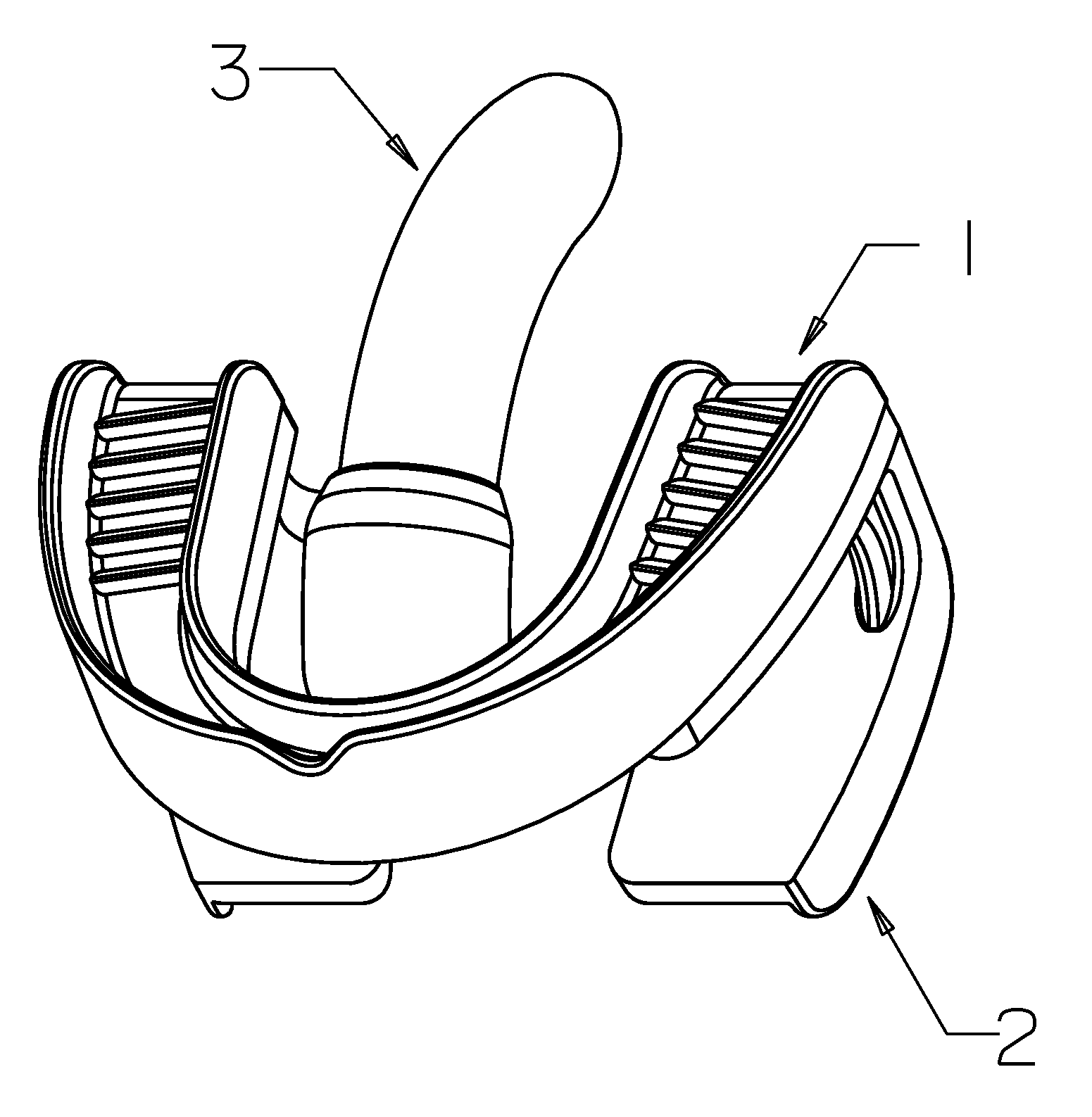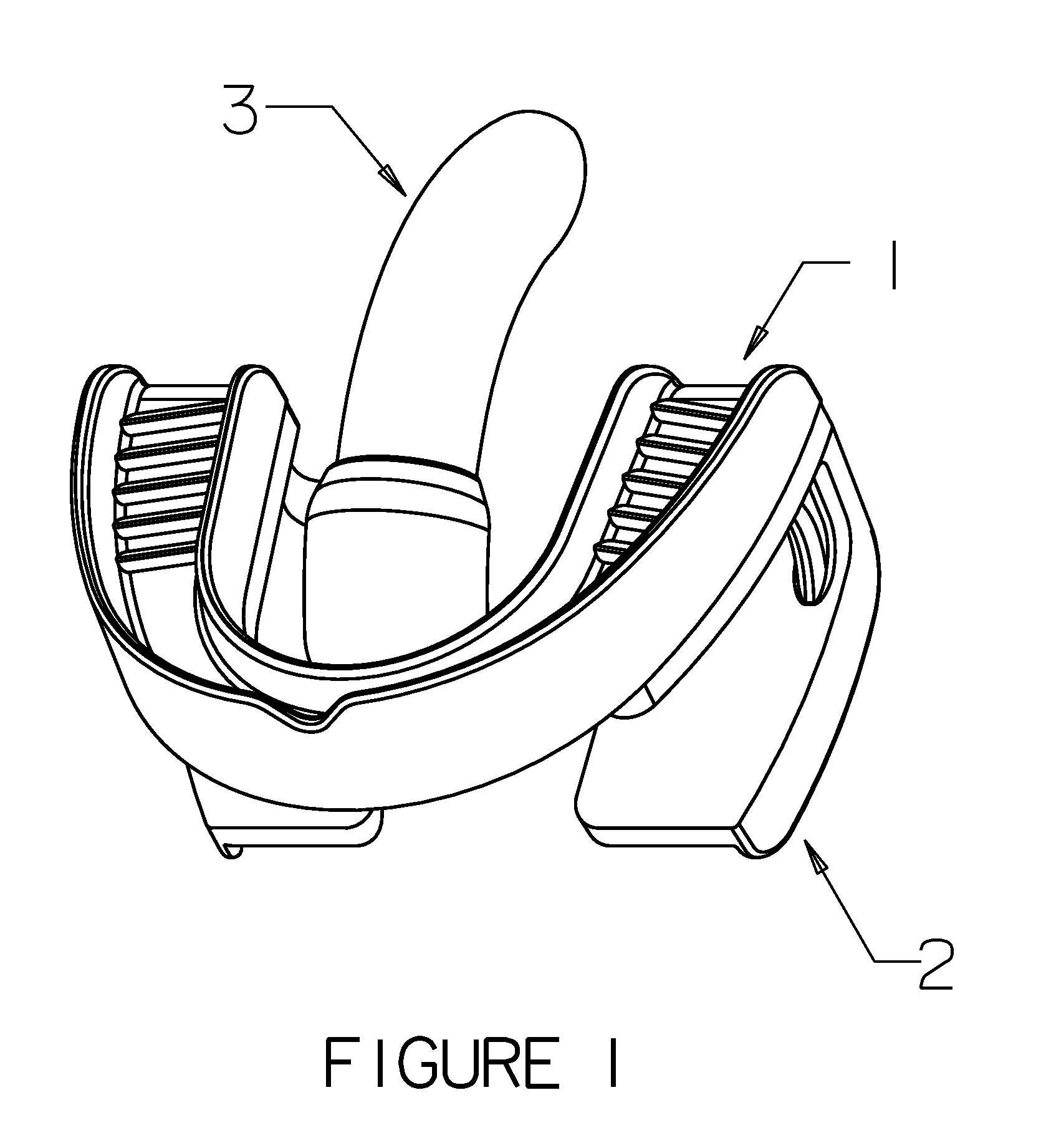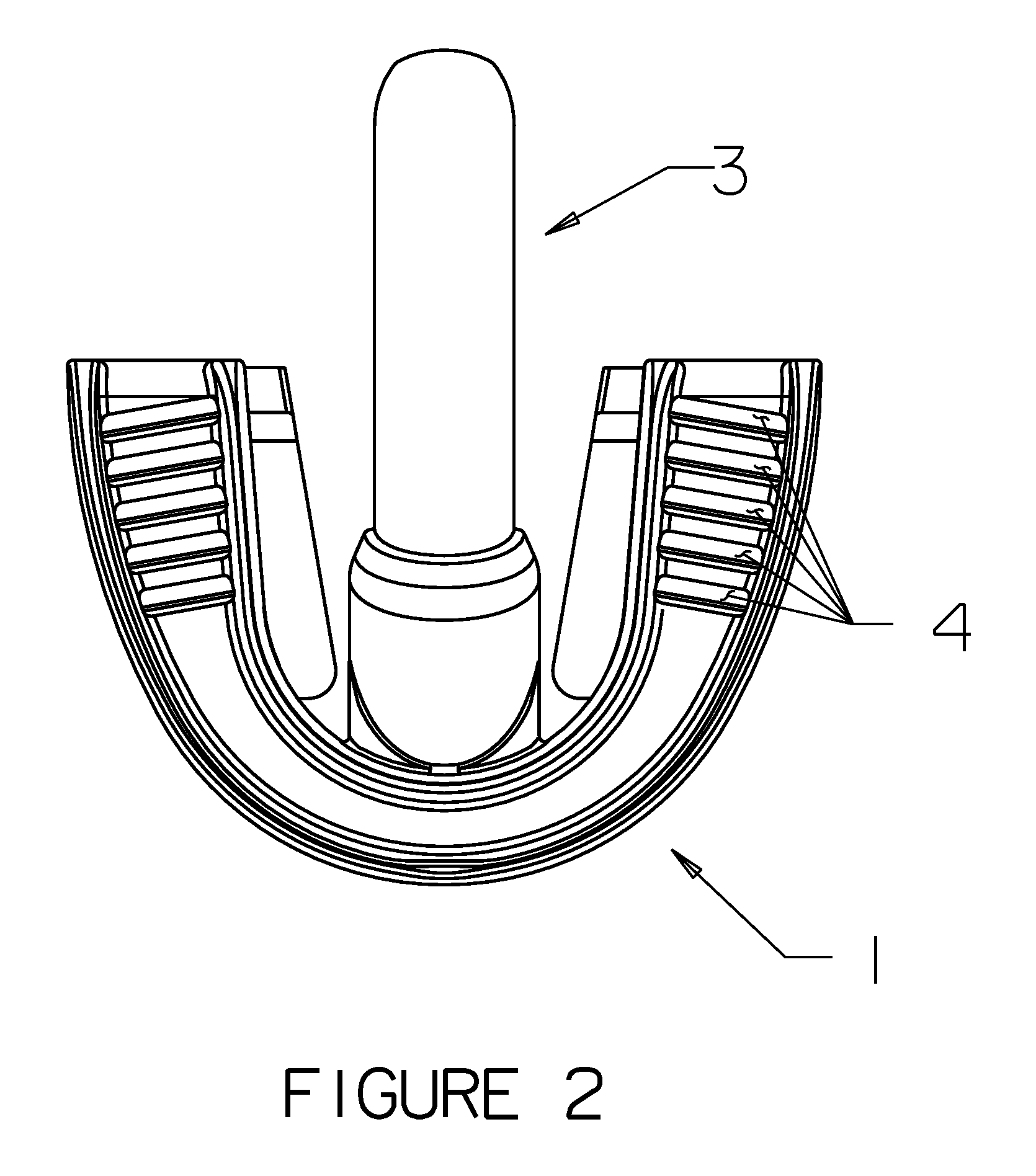Rapid orotracheal intubation guide
a technology for orotracheal intubation and guide, which is applied in the field of orotracheal intubation guide, to achieve the effects of simple use, fast and accurate intubation, and higher probability of successful intubation
- Summary
- Abstract
- Description
- Claims
- Application Information
AI Technical Summary
Benefits of technology
Problems solved by technology
Method used
Image
Examples
Embodiment Construction
[0025]A ROTIG device comprises the following structure: (a) an upper bite tray for a subject's upper (maxillary arch) teeth, which upper bite tray is joined or integral with, (b) a lower bite tray (which, in some embodiments, consists of a left lower bite tray and a right lower bite tray, each joined to the upper bite tray) for a subject's lower (mandibular arch) posterior teeth, and (c) a tube (“guide tube”) attached to the lingual, proximal aspect of the upper bite tray, which guide tube has a proximal open end below the upper incisor area of the upper bite tray (“proximal opening” of the guide tube) and a distal open end projecting posterior to the molar area of the upper bite tray (“distal opening” of the guide tube), which guide tube is slit longitudinally along the entire length of the lingual aspect of the tube. The structural elements may be discrete and assembled into a ROTIG device, or they may be integral. The upper and lower bite trays are typically joined, or manufactur...
PUM
 Login to View More
Login to View More Abstract
Description
Claims
Application Information
 Login to View More
Login to View More - R&D
- Intellectual Property
- Life Sciences
- Materials
- Tech Scout
- Unparalleled Data Quality
- Higher Quality Content
- 60% Fewer Hallucinations
Browse by: Latest US Patents, China's latest patents, Technical Efficacy Thesaurus, Application Domain, Technology Topic, Popular Technical Reports.
© 2025 PatSnap. All rights reserved.Legal|Privacy policy|Modern Slavery Act Transparency Statement|Sitemap|About US| Contact US: help@patsnap.com



